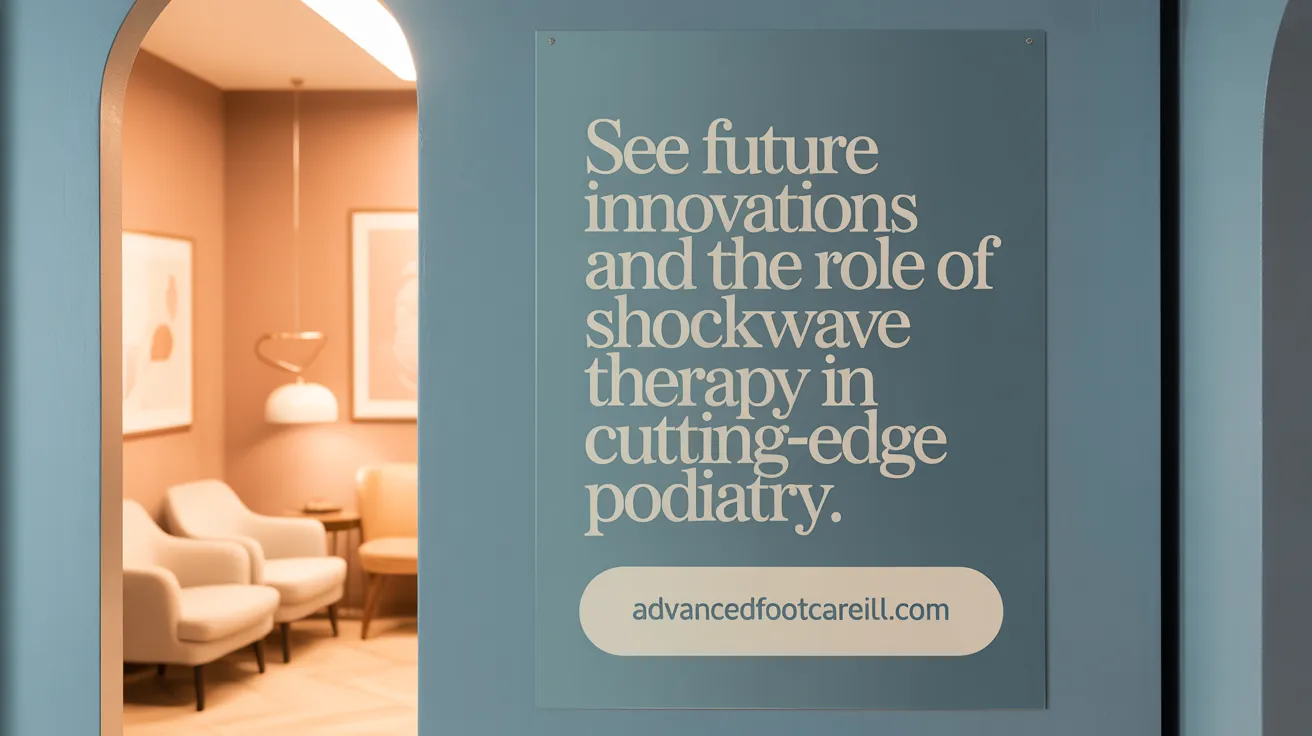Introduction to Shockwave Therapy for Pain Relief
What is shockwave therapy?
Shockwave therapy, also known as extracorporeal shockwave therapy (ESWT), is a non-invasive medical treatment that uses high-energy acoustic sound waves to stimulate healing. Originally developed in the 1980s for breaking up kidney stones, it has since been adapted to treat musculoskeletal injuries and chronic pain conditions efficiently and safely.
Basic mechanism and treatment process
During the therapy, a specialized handheld device delivers acoustic pressure waves through the skin to affected tissues such as tendons, ligaments, and muscles. These shockwaves increase blood flow, promote cellular permeability, and stimulate the body’s natural healing responses by activating growth factors and reparative cells. The typical session lasts about 15 to 20 minutes and does not require anesthesia. Patients may feel mild discomfort characterized by short pulses and warmth, which usually subsides shortly after treatment.
Scope of conditions treated
Shockwave therapy is effective for a broad range of conditions, especially sports injuries and chronic soft tissue disorders. Commonly treated issues include plantar fasciitis, Achilles tendinopathy, tennis elbow, jumper's knee, Morton’s neuroma, and various tendinoses and ligament injuries. It is particularly beneficial for patients with chronic injuries lasting over four to six weeks who have not responded to traditional treatments. Additionally, shockwave therapy offers a safe alternative to surgery and steroid injections, promoting long-term healing rather than merely masking symptoms.
How Shockwave Therapy Works to Stimulate Natural Healing
How does shockwave therapy promote natural healing?
Shockwave therapy utilizes high-energy acoustic waves delivered to injured soft tissues, ligaments, and tendons. These sound waves increase the permeability of cell membranes, which triggers a localized inflammatory reaction essential for the natural healing cascade. Enhanced blood circulation follows, supplying damaged areas with oxygen and nutrients vital for repair.
What types of shockwave therapy are there?
Shockwave therapy is primarily offered in two forms: focused and radial. Focused shockwave therapy targets a small, precise area, penetrating deeper tissues—up to 13-14 centimeters—making it suitable for bone and joint conditions. Radial shockwave therapy disperses energy over a broader, more superficial area, reaching depths around 3 to 6 centimeters, mainly affecting tendons and soft tissues.
What biological responses does shockwave therapy stimulate?
The mechanical forces from shockwaves stimulate collagen synthesis via fibroblast proliferation, enhancing the structural integrity of tendons and ligaments. Growth factors like vascular endothelial growth factor (VEGF) and insulin-like growth factor 1 (IGF-1 are released, promoting neovascularization and new tissue generation. These effects accelerate healing by increasing tissue regeneration and supporting osteogenesis in bone-related conditions.
How does shockwave therapy modulate pain?
Shockwave therapy reduces pain by several mechanisms: it overstimulates nerve endings, temporarily disrupting pain signal transmission (akin to gate-control theory), and promotes the release of endogenous analgesic substances. Additionally, it decreases chronic inflammation and edema, further contributing to pain relief and improved mobility.
Overall, shockwave therapy acts as a catalyst for the body’s inherent repair systems, offering an effective, non-invasive alternative for chronic musculoskeletal injuries unresponsive to conventional treatments. For more details on the energy flux density in shockwave treatment protocols and differences in focused vs radial shockwave therapy mechanisms, consult specialized resources.
Clinical Applications of Shockwave Therapy in Musculoskeletal and Chronic Pain Conditions
What conditions can shockwave therapy effectively treat?
Shockwave therapy (extracorporeal shockwave therapy (ESWT)) is broadly utilized for various musculoskeletal and chronic pain conditions. It effectively addresses sports-related injuries like plantar fasciitis, Achilles tendinopathy, jumper's knee, tennis elbow, and Morton’s neuroma. Additionally, it treats tendonitis, bursitis, stress fractures, chronically inflamed tendons, ligament injuries, and calcific deposits in degenerative tendinopathies. Patients with chronic pain unresponsive to conventional treatments, typically lasting more than 4 to 6 weeks, often benefit from this therapy.
What neurological conditions benefit from shockwave therapy?
Besides musculoskeletal uses, shockwave therapy shows promise in managing neurological conditions that cause spasticity. Disorders such as stroke, multiple sclerosis, cerebral palsy, and amyotrophic lateral sclerosis (ALS) may see improved range of motion and reduced muscle tone with ESWT intervention. This emerging indication expands shockwave therapy's applicability beyond traditional orthopedics as detailed in extracorporeal shockwave therapy (ESWT) for musculoskeletal and neurological diagnoses.
How does shockwave therapy compare with conventional treatments and surgical options?
Shockwave therapy stands out as a non-invasive alternative that can reduce reliance on surgery, steroid injections, and prolonged use of medications like NSAIDs. ESWT enhances healing by increasing blood flow, stimulating collagen production, and modulating nerve pain signals (pain relief with shockwave therapy). Unlike surgery, treatment sessions are brief (approximately 15 minutes), require no anesthesia, entail minimal discomfort, and allow quick return to daily activities. It is especially recommended when conservative therapies fail (shockwave therapy vs conventional treatments.
What are the treatment protocols and who are suitable candidates?
Treatment protocols typically involve 3 to 6 sessions spaced weekly. Devices utilize focused or radial shockwaves, chosen based on tissue depth and injury type (energy flux density in shockwave treatment protocols). Patients generally feel mild discomfort described as pulses or warmth during sessions, with possible transient redness or swelling afterward. Contraindications include pregnancy, coagulation disorders, active infections, tumors, severe soft tissue tears, and treatment over certain anatomical areas. Candidates with chronic injuries persisting beyond a month and not responding to traditional treatments are ideal for ESWT (contraindications and protocols).
Overall, shockwave therapy represents an innovative, accessible, and safe option for patients managing complex musculoskeletal and neurological pain conditions, with an expanding scope of application in clinical practice (shockwave therapy benefits and safety).
Patient Experience and Safety Profile of Shockwave Therapy

What can patients expect during and after shockwave therapy sessions?
Shockwave therapy sessions typically last between 15 to 20 minutes, performed using a compact handheld device that emits high-energy acoustic pulses targeted at the injured area. Patients commonly report sensations of rapid pulses and a feeling of warmth during treatment, with discomfort levels generally mild and rated under 5 out of 10. The procedure requires no anesthesia and minimally disrupts daily routines.
After treatment sessions, mild side effects such as localized swelling, redness, bruising, or tenderness may occur, but these reactions usually resolve quickly without intervention. Most patients can return to their normal activities immediately following therapy, aided by the non-invasive nature of the procedure.
Typical side effects and risk factors
While side effects are infrequent and largely minor, potential reactions include transient skin redness, swelling, slight bruising, and tenderness at the treatment site. More severe complications are rare but can include tissue damage if improperly administered or in cases of very low bone density. For detailed information, see Shockwave therapy side effects and ESWT side effects and safety.
Contraindications for shockwave therapy
Certain patients should avoid shockwave therapy due to contraindications. These include individuals who are pregnant, have coagulation or bleeding disorders, use anticoagulant medications, or have malignant tumors or active infections near the treatment area. It is also contraindicated for children with open growth plates and patients with specific neurologic conditions or pacemakers. For comprehensive guidelines, see Contraindications for shockwave therapy and ESWT contraindications.
FDA status and practitioner qualifications
Shockwave therapy is FDA-cleared for selected musculoskeletal conditions such as plantar fasciitis and lateral tennis elbow. The treatment is administered by qualified healthcare providers trained in specific protocols to ensure safety and maximize therapeutic benefit. Devices may be supervised by physicians, and proper patient screening is essential to avoid complications. More on FDA approval and safety and trained shockwave therapy providers.
Together, these factors contribute to a high safety profile of shockwave therapy, making it an effective and well-tolerated option for patients with chronic musculoskeletal injuries resistant to conventional treatment. For an overview of the treatment benefits and safety, see Shockwave therapy for chronic injuries and ESWT clinical effectiveness.
Benefits Over Traditional Pain Management and Role in Minimally Invasive Treatments

How does shockwave therapy compare to traditional pain treatments?
Shockwave therapy offers a significant advantage over conventional pain management options like NSAIDs and surgery. Unlike NSAIDs, which can pose risks of gastrointestinal bleeding, kidney damage, and cardiovascular complications, shockwave therapy is a drug-free, non-invasive treatment. It avoids the systemic side effects associated with medications and eliminates the need for surgical procedures, which often involve longer recovery times and increased risks.
Advantages of shockwave therapy compared to NSAIDs and surgery
Shockwave therapy accelerates healing by stimulating blood flow, tissue regeneration, and reducing inflammation directly at the injured site. This localized effect leads to rapid pain relief and improved mobility, often noticeable within 24 to 48 hours post-treatment. It can effectively address chronic injuries that have not responded to conservative treatments, helping patients avoid surgery or repeated steroid injections (extracorporeal shockwave therapy benefits).
Integration with physical therapy and rehabilitation
The therapy is often combined with physical therapy and rehabilitation programs to enhance recovery outcomes. Shockwave therapy complements exercise-based approaches by promoting tissue healing, which supports faster restoration of function and strength. Patients can typically continue daily activities during the treatment course, allowing for an active rehabilitation process without significant interruption (shockwave therapy and physical therapy.
Minimally invasive nature and avoidance of lengthy recovery
Sessions usually last about 15 to 20 minutes, require no anesthesia, and have minimal side effects such as mild discomfort or temporary redness. Because it is non-invasive, patients experience little to no downtime and return to normal activities almost immediately, contrasting with the extended recovery periods common with surgical interventions (minimally invasive pain management techniques).
Cost considerations and insurance coverage
The cost of shockwave therapy ranges approximately from $250 per treatment area to around $550 for a package of multiple sessions. Although not commonly covered by insurance, patients often can utilize Health Savings Accounts (HSAs) or Flexible Spending Accounts (FSAs) to offset expenses. While initial costs may be higher than some traditional treatments, the reduced risk and avoidance of surgery-related expenses present a valuable alternative for many patients seeking effective pain relief (shockwave therapy cost.
Scientific Evidence and Mechanistic Insights Supporting Shockwave Therapy Efficacy

What scientific evidence supports the effectiveness of shockwave therapy?
Clinical evidence robustly supports extracorporeal shockwave therapy (ESWT) as an effective treatment for tendinopathies and chronic musculoskeletal conditions. Studies involving hundreds of patients demonstrate significant reductions in pain and functional impairment post-treatment. Commonly treated conditions include plantar fasciitis, Achilles tendinopathy, lateral epicondylitis, and rotator cuff injuries. Typically, patients undergo 3 to 5 sessions, each spaced weekly, with many experiencing noticeable improvement within 24 to 48 hours and continued benefits over several weeks.
Mechanotransduction and biochemical pathways involved
Shockwave therapy operates primarily through mechanotransduction in shockwave therapy. Acoustic shockwaves stimulate cellular responses by increasing cell membrane permeability and triggering localized inflammation, which accelerates tissue repair. Biochemical pathways activated include promotion of collagen synthesis via fibroblast proliferation, increased ATP release, and release of angiogenic growth factors such as vascular endothelial growth factor (VEGF). Additionally, ESWT facilitates neovascularization to improve blood flow, supports neuroprotective processes to reduce nerve pain, and dissolves calcific deposits in tendons, fostering regeneration.
Long-term results and functional improvement
Longitudinal studies reveal that shockwave therapy not only provides immediate pain relief but also enhances long-term function and tissue quality. Improvements in range of motion, muscle strength, and return to activity are consistently reported. Moreover, ESWT offers a non-invasive alternative to surgery or steroid injections, with minimal adverse effects and a rapid recovery timeline that enables patients to resume daily activities quickly.
Research gaps and evolving protocols
Although ESWT's safety and efficacy are established, research continues to refine optimal treatment parameters, including energy flux density in shockwave treatment protocols, impulse numbers, and session frequency. Comparative studies between focused vs radial shockwave therapy mechanisms are ongoing to tailor therapy depth and intensity to specific clinical scenarios. Investigations into combined therapies and standardized education for clinicians are also advancing to optimize patient outcomes.
Overall, shockwave therapy presents a scientifically supported, effective modality that stimulates the body's natural healing mechanisms through precise mechanical and biochemical actions, with sustained therapeutic benefits for chronic soft tissue injuries.
Future Perspectives and Integration in Advanced Podiatry Care

What is the future outlook for shockwave therapy in podiatry and chronic pain management?
Shockwave therapy is poised for growth in podiatry and chronic pain management due to ongoing advancements in device technology and treatment protocols. Future treatment plans emphasize personalization, using focused shockwave devices for deeper tissue injuries and radial units for more superficial conditions. This precision enhances efficacy by targeting specific tissue depths relevant to distinct foot and ankle pathologies.
Integration of shockwave therapy with complementary approaches such as regenerative medicine, including stem cell and platelet-rich plasma therapies, physical rehabilitation, and natural pain management strategies, offers a multifaceted path to enhance healing and functional recovery. Such combination therapies address not only symptom relief but also stimulate tissue regeneration and repair.
Expanding applications beyond traditional musculoskeletal injuries to include neurologic conditions and post-surgical recovery reflect the broadening scope of shockwave therapy within podiatry. This growth is supported by a focus on patient education to increase understanding and comfort with this non-invasive modality, encouraging adoption.
Expert-led podiatry clinics incorporating shockwave therapy provide structured, evidence-based care that is minimally invasive and tailored to meet individual patient needs. As clinical guidelines become more standardized and research progresses, shockwave therapy is expected to become a mainstay in advanced podiatric care for managing chronic foot and ankle pain effectively.
Conclusion: A Transformative Approach to Natural Pain Relief
Comprehensive Benefits of Shockwave Therapy
Shockwave therapy presents a groundbreaking, non-invasive solution that enhances the body's natural healing capabilities. By delivering targeted acoustic waves, it promotes tissue regeneration, increases blood flow, and effectively reduces pain. This innovative treatment effectively addresses chronic musculoskeletal conditions such as plantar fasciitis, Achilles tendinopathy, and tennis elbow, reducing inflammation and promoting collagen production for lasting relief.
Integral Role in Modern Pain Management
As a safe, FDA-approved procedure, shockwave therapy acts as a pivotal alternative to surgery and long-term medication use. Its minimal side effects and rapid recovery time make it an appealing option for patients with chronic injuries unresponsive to conventional therapies. The therapy seamlessly integrates into multidisciplinary care plans, providing accelerated healing and improved mobility.
Encouraging Advanced Treatment Consideration
Patients struggling with persistent pain are encouraged to consider shockwave therapy as part of a comprehensive approach to pain management. Its ability to target root causes rather than merely mask symptoms represents a significant advancement in patient care. Seeking consultation with trained healthcare providers can facilitate access to this cutting-edge therapy, fostering enhanced recovery and improved quality of life.
